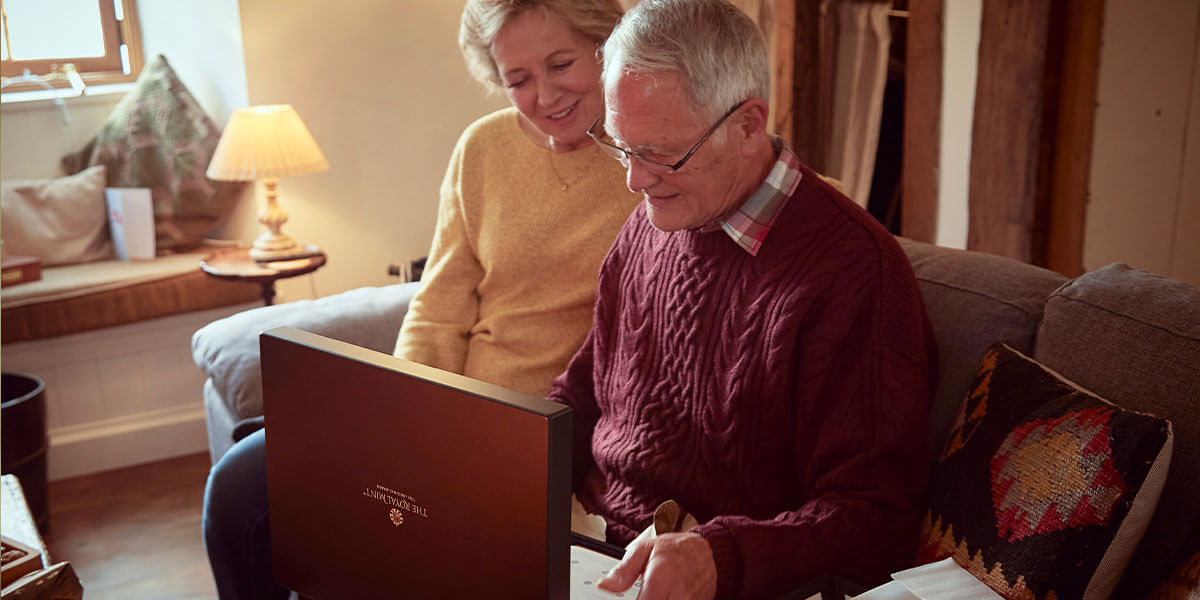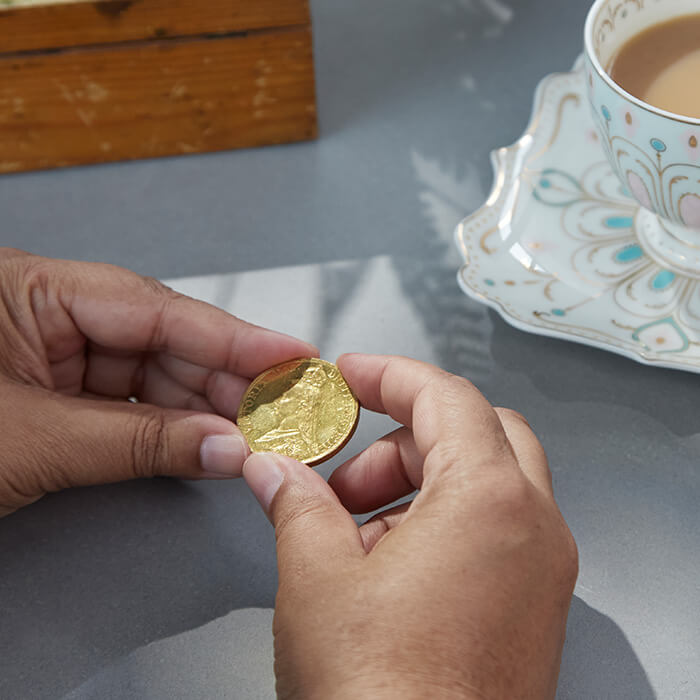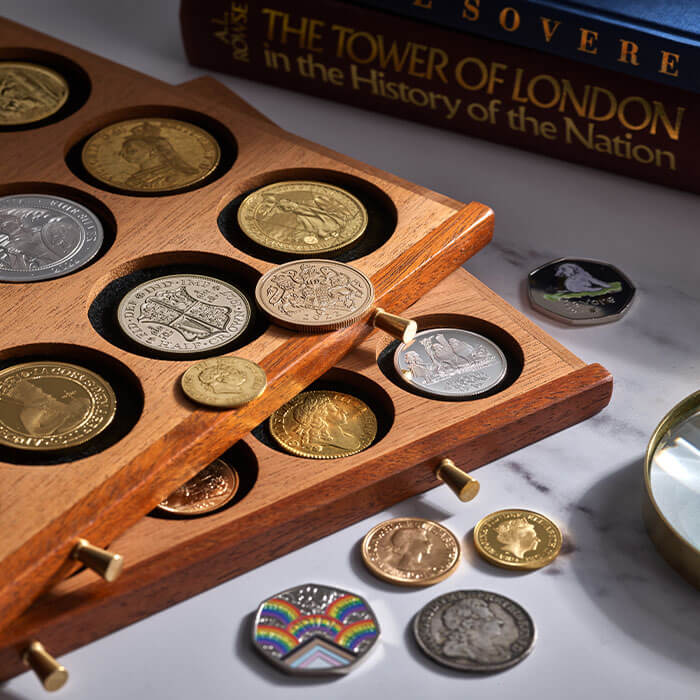We are at the very heart of collecting as experts in our field and deliver a premium experience to coin collectors searching for numismatic rarities to complete their collection. We can help you to expand your collection with highly sought after coins with our passionate team of in-house experts.
So many rare coins have been crafted throughout history. Demand has often dictated the production of some circulating denominations, with one of the most well-known cases of this being the 2009 Kew Gardens 50p coin. Other coins have become rare over time as due to excessive wear they are melted down or removed from circulation.
Here are some of the rarest coins produced by The Royal Mint.
- 1933 Penny
- George V Sovereign
- Kew Gardens 50p Coin
- Petition Crown
- Una and the Lion
- Discover your Next Rarity

1933 Penny
The 1933 penny is one of the rarest editions of this denomination. Due to a lack of demand for pennies in 1933, none were produced for circulation. However, there was a tradition that complete sets of year-dated coins were placed in the foundations of new buildings.
Only a small number of 1933 pennies are recorded as being struck for these complete sets – three to be placed under foundations stones of new buildings and some to be kept as record copies by The Royal Mint Museum and the British Museum. There was no record kept at the time to show how many had been produced, but it is thought to be no more than six or seven coins.
George V Sovereign
The Sovereign was last struck for circulation during the reign of George V. Even though The Sovereign had been used in circulation since it was reintroduced during the reign of George III, the outbreak of the First World War in 1914 affected the everyday coinage that was used. Gold was required to fund the war effort and The Sovereign was replaced by paper banknotes.
The year 1917 was the last year that The Sovereign was struck for circulation and was produced in low numbers compared to the amount produced in previous years. A large number of Sovereigns were given to the United States to pay the country’s debts following the war, which were melted down and made into ingots. Another large number of Sovereigns were also melted down in the United Kingdom in the 1930s.
While it’s difficult to know for certain which Sovereigns were melted down for these processes, the 1917 Sovereign has become highly sought after because of its low mintage figures. It is likely that some of these would have been included in the batches of Sovereigns melted down, which makes the remaining 1917 Sovereigns even rarer.
Kew Gardens 50p Coin
One of the most sought-after circulating coins is the Kew Gardens 50p coin. Due to a lack of demand from the banks in 2009, not many 50p coins were required during this year, so only 210,000 of these commemorative issues were minted. This makes the Kew Gardens 50p coin arguably the rarest in circulation. It is one of the most sought-after circulating coins for collectors and often fetches well above its face value thanks to keen collectors.
Petition Crown
The newly crowned Charles II invited John Roettier and his brothers to England. Alongside the then Chief Engraver Thomas Simon, the Roettiers were invited to submit designs for the new coinage. Due to the pressure of work at the mint for new tooling, Simon missed the deadline and the king instead chose a design by John Roettier, who eventually replaced Simon as Chief Engraver.
Simon was devastated at being side lined and worked on his famous petition crown in response, directly petitioning the king to reinstate him as an engraver. The coinage portrait of Charles II on the obverse is beautifully detailed, depicting the skill of the former Chief Engraver. This petition crown featured a remarkable double line edge inscription that was difficult to achieve at the time.
Although Simon wasn’t reinstated as Chief Engraver, his petition crown is renowned throughout the world of numismatics for its rarity and beauty. Both the reverse and obverse designs were remastered as part of our Great Engravers Collection in 2023.
Una and the Lion
William Wyon RA’s Una and the Lion design is one of the most beautiful and rare coins to have been produced by The Royal Mint. Originally created as a Five-Sovereign piece, the reverse design was inspired by the poem The Faerie Queene by Edmund Spenser. This beautiful reverse depicted Queen Victoria in the role of Una and the British people by her side as the Lion.
This coin wasn’t produced for circulation and was likely intended for collector sets dated 1839. However, these were delayed until 1843 and approximately only between 300 to 500 of these beautiful coins were produced at the time. This design was remastered in 2019 as part of our Great Engravers collection, and some rare trial pieces with hallmarking were also available for some collectors to purchase.
Discover your Next Rarity
The Royal Mint is a valuable resource for dedicated coin collectors. Our Collector Services team offer a coin finding service to find the numismatic rarities that you need to complete your collection and a coin authentication and valuation service to help you identify and value the coins in your collection. We also occasionally offer rare coins or trial pieces featuring special hallmarking to collectors through our auction process. Our expertise will help you get to the heart of your collection and discover the stories behind the rarities.






